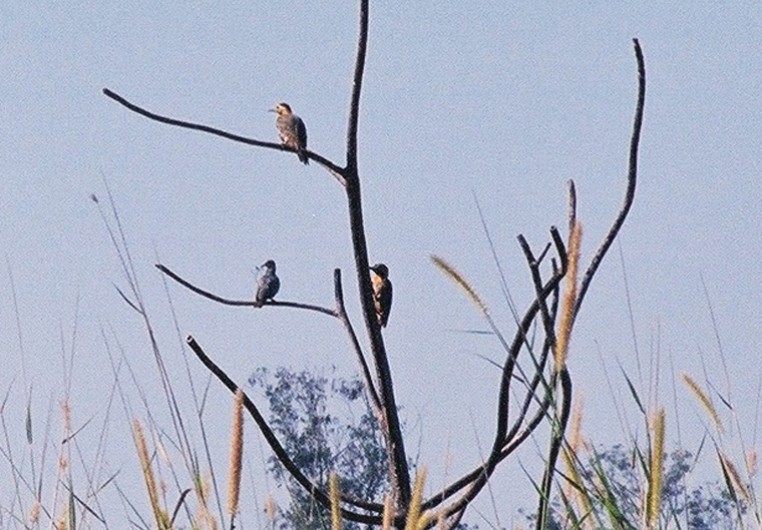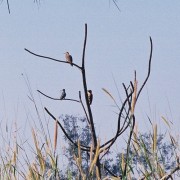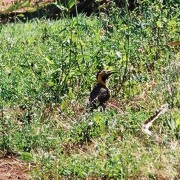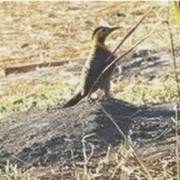Biodiversity
 Campo flicker
Colaptes campestris | Vieillot, 1818
Campo flicker
Colaptes campestris | Vieillot, 1818

Vocalization

Characterization: Small species measuring about 32 cm in length. The sides of its head and neck are yellow, its anterior chest area back, its belly is barred, and the bottom portion of its back is conspicuous white when in flight. In general, the male has a narrow red stripe on the side of its head, near the bottom of its beak.
Distribution: Northeastern Brazil to Uruguay, Paraguay, Bolivia and Argentina; also in the fields in the lower Amazonas and Suriname.
Habitat: Countryside regions, high in the mountains, above the forest line and scrublands.
Habits: A diurnal and terrestrial species, this is the one that is most used to life on the ground, even enjoying taking dust baths. It lives alone or in small flocks, jumping through the branches horizontally like a crow. When it wants to escape, it seeks trees, stakes or large rocks.
Diet: Carnivorous, feeding on ants and termites.
Breeding: It lays 2 to 4 eggs in cavities the couple builds in tree trunks, preferably dead and bare, or even on semi-decayed poles and stakes.
In the UFRA area: The Campo Flicker is a species considered frequent in the surveys that were done because it was found only 45 times. Its spatial distribution was broad, having been seen in exotic woods, wetlands with herbaceous plants, in restored native forests, in mixed forests in regeneration, native forests, in drainage ditches, in forests in spontaneous regeneration, and in fields in spontaneous regeneration.






